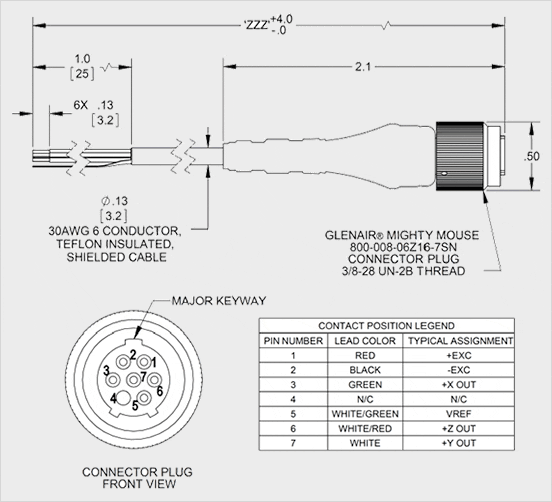Question
I have a model 7298 accelerometer. Please explain the single-ended and differential modes of operation and how to wire each mode to the model 136 amplifier.
Answer
When applied to piezoelectric charge accelerometers, "single-ended" and "differential" modes refer to the characteristic of the output signal. Effectively, the difference between the two is how they handle external noise sources, typically electro-magnetic interference (EMI).
The
7298 triaxial Microtron
® variable capacitance triaxial accelerometer can operate in both modes, depending on how the accelerometer is wired to the amplifier. The
3907 interface cable is recommended, or you can separately purchase the mating connector, Glenair
® 800-008-06Z16-7SN.
Let's start by looking at the pin assignment of the
7298.
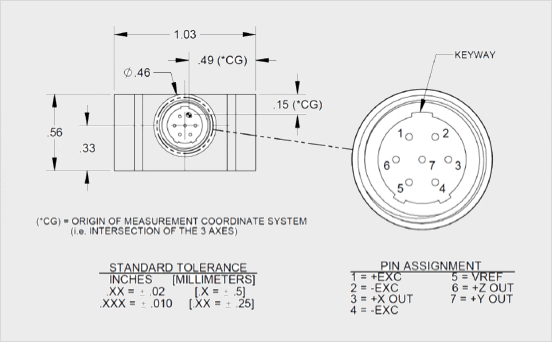
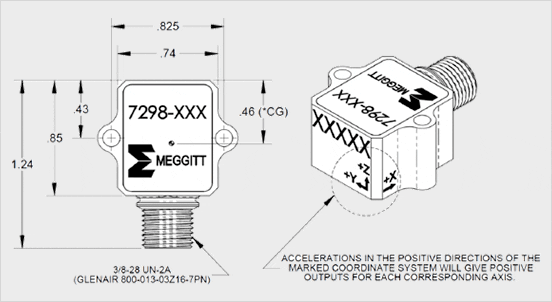
Single-ended mode
Single-ended accelerometers depend on shielding and a good ground to reject external noise sources. The accelerometer's casing is grounded, and this ground is carried all the way through to the coaxial cable's shield. Somewhere in the system a good, reliable ground is needed, typically at the signal conditioner. This mode is normally used with amplifiers that are AC-coupled, which removes the DC bias voltage. (However, the model 7298 is case isolated, not connected to ground.)
Wiring
The amplifier's common or return connection for each axis is connected to the accelerometer's connector pin 2 or pin 4 (- EXC) and the (+) output for each axis is connected to the amplifier's (+) input. The output signal is biased at 2.5 VDC and swings ±2 from this reference (0.5 VDC to 4.5 VDC).
Power is supplied to the accelerometer from channel 1 of the 136 amplifier. Note that the shield from the 3907 interface cable is not connected to the accelerometer, but the shield wire should be connected to pin 9 of the 136 input connector to provide shielding for the cable. Pins 1 and 7 and pins 6 and 8 are jumpered at the 9-pin D connector, for channel 1 only. This is required for proper output power connection to the model 136.
The (S-) connection for all three axes is connected to pin 2 of the 3907 interface cable, which connects them to (-Excitation). It is recommended to wire the cable without the accelerometer attached.
The below wiring diagram is applicable to the Endevco amplifier models 126, 136 and 436.
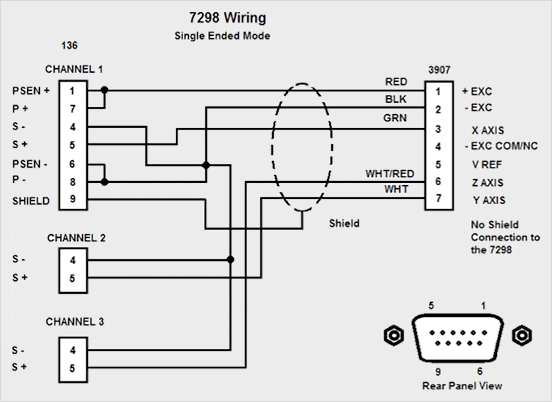
Differential mode
Differential output accelerometers depend on common-mode rejection. Since the output signal is differential (on two pins, equal in amplitude, but opposite in phase), any impinging external noise source will impact both signals equally and is thus known as "common-mode" noise. With appropriate signal conditioning, common-mode noise can be largely rejected while still passing valid signal. To ensure that this works, appropriate cables (twisted-pair) and charge amplifiers/signal conditioners must also be used. Your 136 differential voltage amplifier is an appropriate choice.
Wiring
The amplifier's common or return connection for each axis is connected to the accelerometer's connector pin 5 (VREF) and the (+) output for each axis is connected to the amplifier's (+) input. The output is referenced to 2.5 VDC and swings plus and minus from this reference. This mode is used with amplifiers that are expecting a differential input signal, being DC-coupled.
Power is supplied to the accelerometer from channel 1 of the 136 amplifier. Note that the shield from the 3907 interface cable is not connected to the accelerometer. The cable shield wire should be connected to pin 9 on the amplifier's input connector, to provide shielding to the cable. Pins 1 and 7 and pins 6 and 8 are jumpered at the 9-pin D connector, for channel 1 only. This is required for proper output power connection to the amplifier.
The (S-) connection for all three axes is connected to pin 5 of the 3907 cable, which connects them to the (VREF) connection on the accelerometer. It is recommended to wire the cable without the accelerometer attached.
The below wiring diagram is applicable to the Endevco amplifier models 126, 136 and 436.
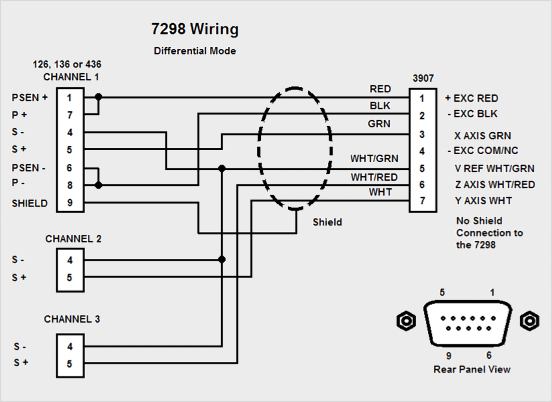
Mixed mode wiring
It is possible to wire a triaxial accelerometer with axes in both modes. Mixed mode wiring can be configured in any combination by wiring an accelerometer's (S-) output to the desired mode connection. Using interface cable 3907, pin 5 is connected for differential mode or pin 2 is connected for single-ended mode.
Summary
The diagram below summarizes wiring for single-ended, differential and mixed modes of operation.
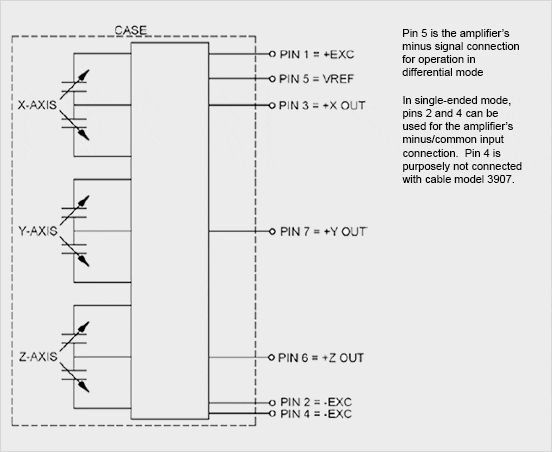
Below is the connector pin assignment and color code for 3907 cables. Please note that the cable is purposely not connected to the (–EXC) pin 4 of the accelerometer.
